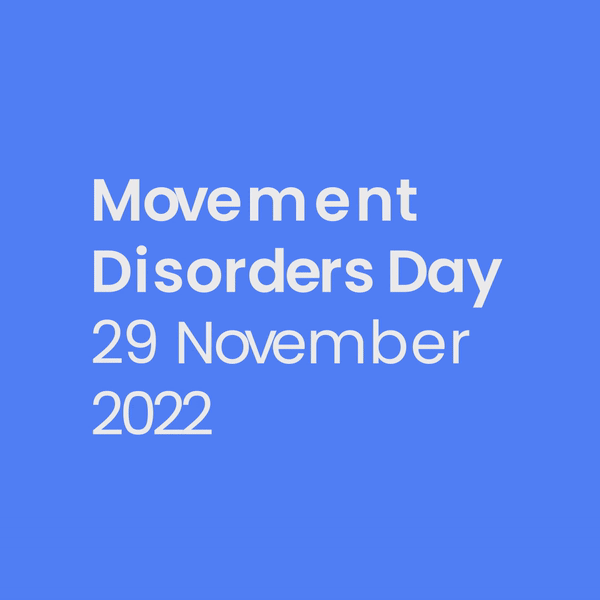To mark this date, we asked Marcelo Mendonça, neurologist and researcher from the Neuropsychiatry Unit and Neural Circuits Dysfunction Lab at the Champalimaud Foundation to provide an overview of Movement Disorders, their symptoms, diagnosis and treatments.
What exactly is a Movement Disorder and how are they classified?
Movement Disorders are a group of neurological conditions that lead to abnormal movements in people. There are a number of different types of movement disorders and the most frequent are Parkinson's Disease and essential tremor (a common and frequent cause of tremor while moving - for instance, while drinking a glass of water). However, there are a vast number of other conditions such as dystonia, Ataxia, Choreas, Huntington's Disease, Dyskinesias and Tic disorders that have specific treatments.
Recognising and increasing awareness of these less common conditions could not only improve the quality of life of people living with them, but simultaneously reduce the stigma associated with abnormal movements or behavioural alterations.
Is it true that people with some level of symptoms typically take a while before seeing a doctor? What do you think prevents people from seeking help?
Many people suffer in silence from movement disorders for several reasons. Maybe the symptoms worsen very gradually, so that they are hardly noticed. Or perhaps the sufferer doesn’t value the symptoms while they are not a major source of discomfort, so they opt to not bother their doctor. Data support that for less common movement disorders a delay in diagnosis is frequent (for instance, up to 5 years for cervical dystonia). There are also some who fear finding out that they have some serious neurological disease so they put off seeing a specialist.
Whatever the reason, one of the key messages that World Movement Disorders Day is trying to transmit is the importance of getting an early and accurate diagnosis, as well as increasing people’s awareness that there may be help for their symptoms.
Why is early diagnosis so important?
An early diagnosis of a Movement Disorder may have an impact on your quality of life: it may provide a framework for understanding not only your motor symptoms but also other more subtle non-motor symptoms that could be present. Early diagnosis could lead to earlier treatment and better quality of life and wellbeing. Simply identifying the name of a condition and offering emotional support can help to release part of the burden, and help with selecting effective coping strategies can help patients adapt more readily to their disease.
Early treatment can also provide better Health Related quality of life over a longer time.
For example, shaking does not necessarily mean that you have Parkinson's Disease or any other movement disorder. If you have a tremor, a tic, some slowness, cramps or stiffness that comes and goes and isn't associated with any other symptom and does not impact your quality of life, the probability is that you are not actually experiencing a movement disorder. However, if the symptoms are recurrent, or if you experience a rapid increase in slowness or muscle contractions, or if you start having trouble during your meals due to tremor, it is important to discuss it with your doctor sooner rather than later.
Much of the fear around movement disorders comes from the conception that they are incurable or even untreatable, even with early diagnosis. How true is this, and what treatment options are there?
Currently we have a confluence of great tools for diagnosis and treatment of Movement Disorders. We have a variety of medications which, paired with physical therapy and exercise, are quite effective in managing the symptoms and helping people to maintain and even improve quality of life. Even when medication is not enough for symptom control there are multiple options - from botulinum toxin, to deep brain stimulation or focused ultrasound - that can dramatically improve well-being. There is active research on disease-modifying therapies for movement disorders. For instance, currently, there are promising new agents targeting specific molecular targets known to be dysfunctional in Parkinson’s Disease aiming to reduce the rate of progression.
Given that there is such a variety of Movement Disorders, what is the team here at the Champalimaud Foundation particularly interested in finding out answers to?
Movement Disorder is a challenging field. On the clinical side, presenting symptoms may be part of multiple diseases, which complicates diagnosis and treatment: shaking could be a symptom of Parkinson’s Disease, essential tremor, dystonia or more. At the same time, different disorders can have similar phenotypes (symptoms). For example, either Multiple System Atrophy or Progressive Supranuclear Palsy symptoms may manifest in a very similar way to Parkinson's Disease.
As a researcher, there are still multiple open questions on what the brain circuit dysfunctions behind symptoms are: Why is there an impairment in self-paced gait initiation in Parkinson’s Disease? Why are there abnormal limb postures in dystonia? Why do tic disorders frequently present obsessive-compulsive or attention symptoms?
At the Champalimaud Foundation, we have an environment/a context where the current understanding of brain circuits can not only help us to consider some of these clinical questions, but also to work on projects focused on symptom resolution. As a team of clinicians and researchers working together - and by this I also mean clinicians conducting research and researchers in the clinic - we can tackle motor and non-motor symptoms with a circuit perspective in mind, all performed while providing state-of-the-art clinical care.
Text by John Lee, Content Developer of the Champalimaud Foundation Communication, Events and Outreach team.


